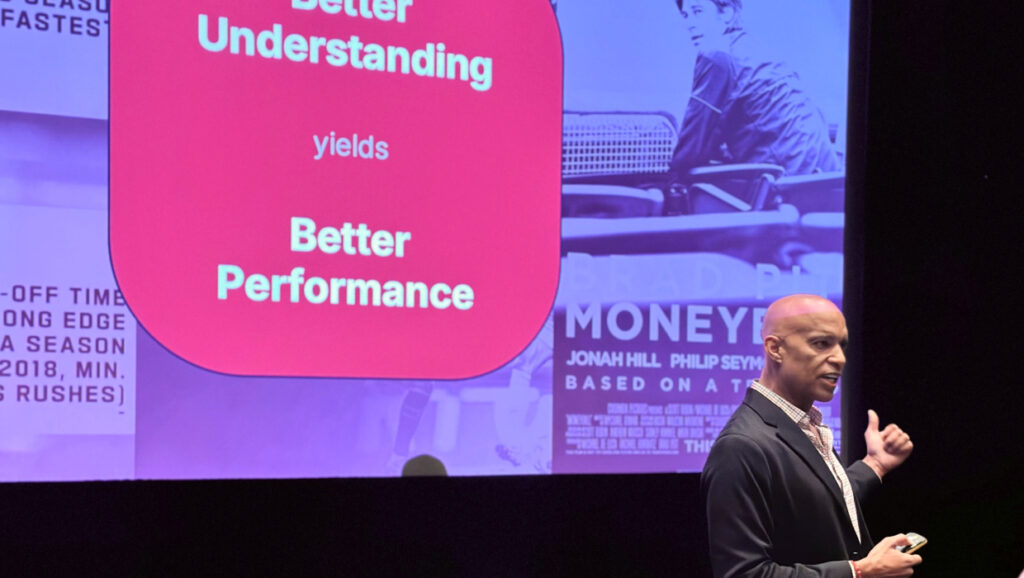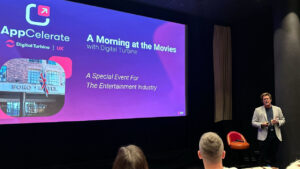From Walled Garden Platforms to Mobile Gaming: Why Advertisers Should Shift their Ad Spend
by on 24th Sep 2024 in News

At its A Morning at the Movies event, Digital Turbine revealed research which makes the case for why advertisers should shift more of their ad spend from walled garden platforms to mobile gaming. Speakers outlined why it’s in advertisers’ best interest not to shy away from the sector, as well as expanding on how they can best dominate the format.
When faced with the task of allocating their ad spend to different media channels, many advertisers and media buyers shy away from mobile gaming. There are certainly some preconceptions about those who fall into the gamer category. As Mark Slade, MD at Digital Turbine put it, they’re “perceived to be a bunch of kids, playing in their bedrooms…but it’s actually everyone now.”
Just how big is the opportunity? Digital Turbine – an ad tech company which powers premium mobile campaigns for advertisers – makes the case that advertisers are missing out on potential customers by not harnessing mobile gaming ads. During the event, Digital Turbine revealed stats demonstrating that 33% of consumers (from the general population) spend more time mobile gaming than on walled garden platforms (WGP, references include YouTube throughout). Looking specifically at cinema goers, figures showed that 29% spend more time on mobile gaming than on WGP. Although the numbers aren’t dramatically high, this portion of the population represents a very significant opportunity for advertisers to tap into. As Greg Wester, SVP Marketing at Digital Turbine suggested, advertisers should ask themselves: are we losing customers by not advertising outside of walled garden platforms? Wester

pointed out that although all WGPs combined have a colossal reach, many advertisers often only focus their campaigns on a couple of these, which actually restricts their audience more than if they embraced venturing outside of the walled gates. Mobile gaming is a far larger category than just YouTube is, for example.
Puzzle power
“One genre reigns supreme,” Kim Grewal, Team Lead, Account Management at Digital Turbine told us, elaborating on the popularity of the mobile gaming industry. The puzzle sector is an area of mobile gaming which is growing immensely. It’s seeing success with all age groups: 41% of Gen X gamers surveyed reported playing, a figure exactly mirrored by Millennials, and followed closely by Gen Z gamers at 38%. Baby boomers are getting involved too, with 31% of surveyed individuals from the age group playing puzzle games on mobile devices. There are clear reasons for the genre’s success; puzzle games are accessible, simple and short, all while providing mental and cognitive stimulation. Plus, they’re typically free.
Interactive video ads: An advertiser’s best friend
One of mobile gaming’s best opportunities for advertisers is the interactive video ad format. The three main formats were introduced to the audience: browse, sample, and play. When presented to a consumer, their interactivity drives an increased level of engagement. Instead of having to sit through a fixed ad placement with no opportunity to interact, users are given the opportunity to scroll through a carousel of products, virtually try out a new product or even play a short game. Through a personalised ad viewing experience, consumers are more likely to form a deeper emotional connection with the brand. A personalised experience such as being able to pick which game to play out of a selection makes the user feel their choices are being catered to, allowing them to seek out something more aligned with their own taste or interests. Consequently, figures show that the odds of purchase are increased.
Now, as an advertiser, how best to harness interactive video ads? Inês Rendas, Brand Advertising at Miniclip, gave us some pointers. First, Rendas explained why advertisers might want to look at interactive ads in earned reward placements in addition to traditional video placements. She elaborated on how these ad placements can help build even more positive sentiment towards the brand: “It’s not intrusive. They will choose to watch it, and they will gain something from watching it.”
Next, Rendas stated the importance of adapting ad creatives to the formats of particular games. Most puzzle games, for example, are displayed vertically in portrait mode. How much attention will be captured from an ad in the wrong format? Almost certainly much less. Rendas also emphasised the importance of advertisers choosing the right games, as well as the right publishers. Lastly, she reminded advertisers to always prioritise the user experience. This is hugely important for game publishers too, as they want to retain their customers.
Focusing specifically on advertising for the entertainment industry, Jessica Maunder, Consultancy Director Digital at Digital Turbine, turned our attention to the art of timing. When it comes to the entertainment industry, the right timing is paramount. She suggested harnessing interactive ads displaying a dynamic timer counting down to the release date of a particular TV show or film in order to build anticipation and excitement. The interactivity of the timer typically leads to engagement rates skyrocketing.
Overcoming the challenges
Revisiting a previous point, one of the main hurdles for the sector involves changing the perception of who mobile gamers are. The audience is so large, encompassing all genders and age groups. The puzzle genre, as Rendas revealed, is actually skewed towards women. This breaks the stereotype that gamers are predominantly male. Slade highlighted the challenge of getting advertisers to understand this, stating that we need to focus on further educating the industry. “It’s not well understood in terms of audience or reach…it’s a matter of companies like us building that narrative and educating customers on the benefits,” he commented.
Examining other obstacles, Slade also pointed out that some publishers can be problematic from an ad experience point of view. “In our industry, the elephant in the room is that there are still too many publishers with terrible popups, banners and poor ad experiences,” he said.
Overall however, the opportunities for brands largely outweigh the challenges. Summing up the discussion, Wester stated: “The ability to harness attention and turn it into a mid-funnel consideration through browse, sample, and play interactive experiences definitely ups the game, and makes mobile gaming a very unique media format opportunity for all industries.”
Ad SpendAdvertiserGamingMobileWalled Gardens








Follow ExchangeWire